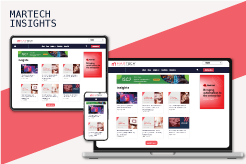Gen X to Drive $15.2 Trillion in 2025 Consumer Spend, Yet Remains Overlooked by Global Brands
Despite capturing trillions in global spending power, Generation X continues to fly under the marketing radar. A new report from NielsenIQ (NIQ) and World Data Lab (WDL) reveals that Gen X those born between 1965 and 1980 is not only the world’s most economically influential demographic over the next decade, but also the most underappreciated by marketers chasing younger audiences.
Titled The X Factor: How Generation X is quietly driving trillions in consumer spending, the report challenges conventional thinking by spotlighting Gen X’s critical role in the global economy. It finds that while Millennials and Gen Z dominate headlines and brand strategies, Gen X will drive $15.2 trillion in global consumer spend in 2025 alone, peaking at $23 trillion by 2035.
Marketing Technology Insights: Cognigy Tops as Leader in Opus Research’s 2025 Conversational AI Intelliview
“Gen X is at the center of a major economic shift driving spending across categories while managing the demands of multiple generations,” said Marta Cyhan-Bowles, Chief Communications Officer and Head of Global Marketing COE at NIQ. “The data is clear Gen X’s influence is profound and far too frequently overlooked by brands.”
Gen X: The Hidden Power Behind B2C and B2B Purchasing
NIQ and WDL’s research positions Gen X not just as consumers, but as strategic decision-makers often responsible for three generations’ worth of financial and purchase influence. Referred to as the “sandwich generation,” many Gen Xers are raising children while also caring for aging parents, giving them unique authority over household, healthcare, financial, and digital purchasing decisions.
“Gen Xers control trillions in spending, acting as financial decision-makers for three generations,” said Wolfgang Fengler, Co-founder & CEO of World Data Lab. “Brands and retailers investing in them now will experience significant growth and sustained ROI.”
For MarTech leaders, the implications are significant. Gen X occupies leadership positions in both large enterprises and small businesses, manages household finances, and shapes purchasing decisions across generations in sectors like beauty, consumer goods, SaaS, travel, and healthcare. As the largest spending cohort through 2033, they represent a vital, often under-targeted buyer persona in both B2C and B2B go-to-market strategies.
Omnichannel, Tech-Enabled, and Brand-Loyal
Contrary to outdated stereotypes, Gen X is deeply engaged in digital ecosystems and responsive to personalized, omnichannel experiences. According to the report, a significant portion of Gen X embraces AI recommendations, leverages automated reordering via smart devices, and even shows openness to augmented reality (AR) shopping environments.
However, Gen X also retains a strong preference for brand familiarity and data privacy. In a world increasingly shaped by generative AI and personalization engines, marketers must strike a balance between trust, transparency, and innovation to engage this cohort meaningfully.
Marketing Technology Insights: Gong Scales Irish Operations Due to Accelerated EMEA Customer Demand
Global Insights: Regional Nuances Matter
The report underscores that Gen X spending trends vary significantly across markets. In North America, Gen X will remain the primary spending engine until at least 2033, with particularly high expenditures in CPG, travel, and technology. In Europe, countries like the UK and Germany show a strong Gen X footprint across healthcare, food, and beauty categories.
In Asia-Pacific and Latin America, however, spending dominance is more fragmented China sees Gen X peaking now, while India and Mexico trend toward Millennial and Gen Z dominance. Brazil, interestingly, is projected to become a Gen X-led economy by 2028, marking it as a critical market for long-term planning.
Why This Matters for MarTech Strategists
For demand generation leaders, brand marketers, and B2B executives, the message is clear: Gen X is not an optional audience it’s a mission-critical one. Their behaviors, preferences, and loyalty metrics differ from digital-native cohorts and require distinct segmentation, targeting, and creative strategies.
Yet most campaign planning still disproportionately prioritizes Gen Z and Millennials, often overlooking the very buyers who are funding subscriptions, controlling procurement budgets, and making strategic investment decisions for households and businesses alike.
To remain competitive through 2033, forward-thinking brands must develop CX, data, and content strategies that not only acknowledge but actively engage Gen X across platforms, regions, and verticals.
Marketing Technology Insights: Netcore Cloud Launches Real-Time Insights Agent for Marketing
For media inquiries, you can write to our MarTech Newsroom at sudipto@intentamplify.com



